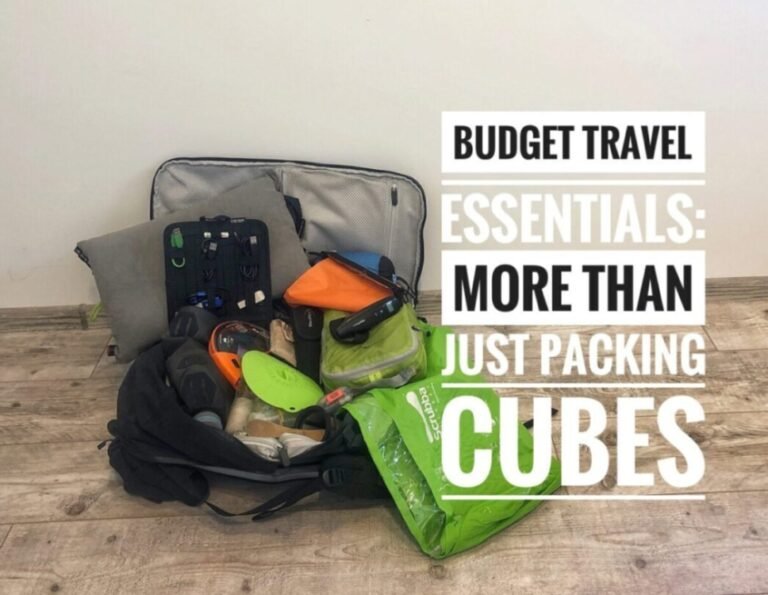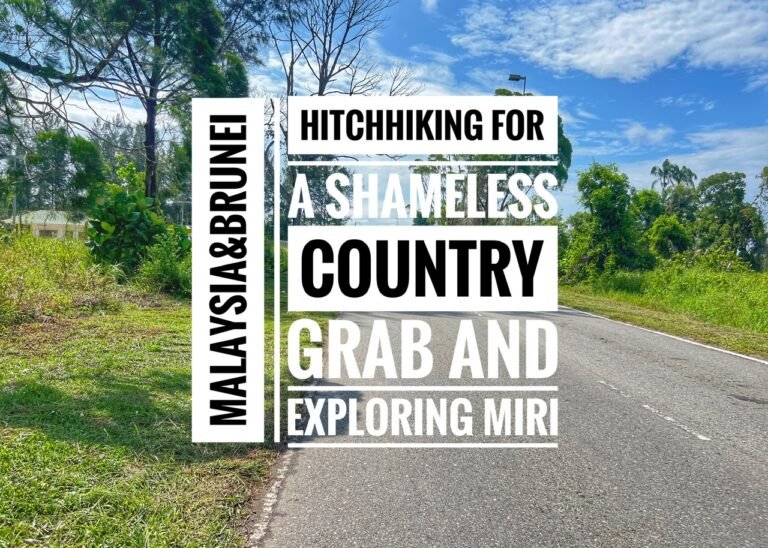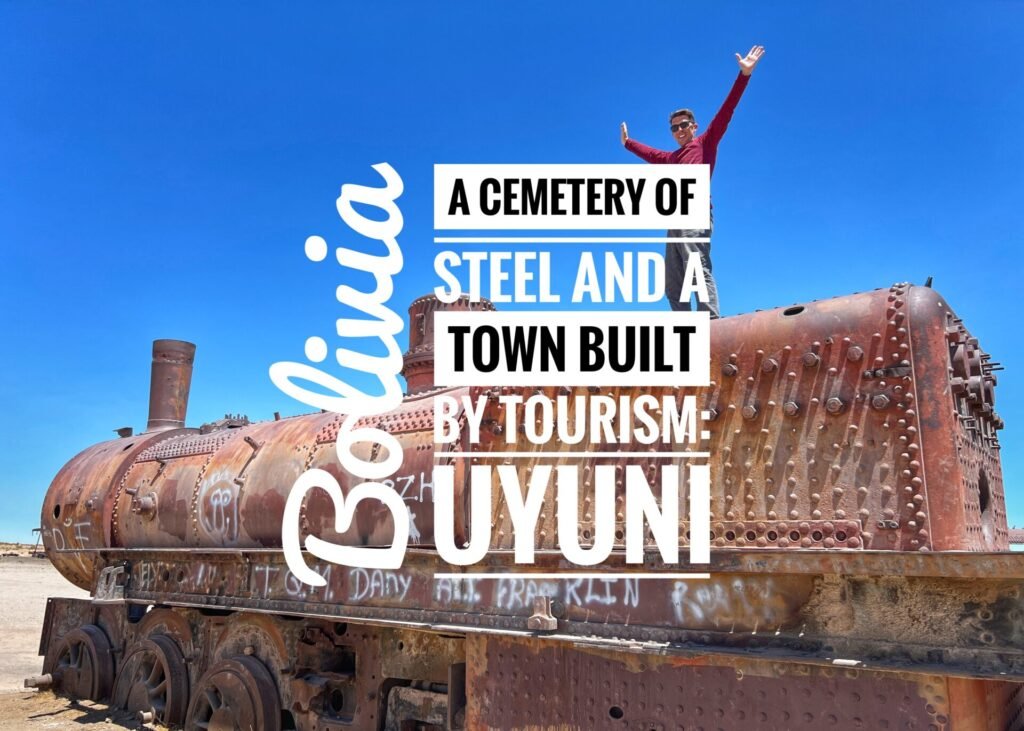
The Town of Uyuni
If you didn’t know about the grand white expanse beyond its borders, you certainly wouldn’t know at first glimpse that this backwater-looking pueblo of 10,000 people is the most visited destination in Bolivia and that nearly 90,000 people pass through annually. Uyuni, at about 12,000 feet, on its own is in fact, a bit gritty, both in appearance as well as the dirt and salt particles that whip through the air causing murder for contact lens wearers.

Still, as usual, we tried to find the redeeming and interesting qualities to appreciate. Uyuni was founded in 1889 as a predominantly salt mining town. The town clock tower is pictured next to one of the few trees anywhere in the region. The air is sooo unbelievably dry. You’re constantly walking around with salt crusties around your eyes, in your nose and probably other orifices too.
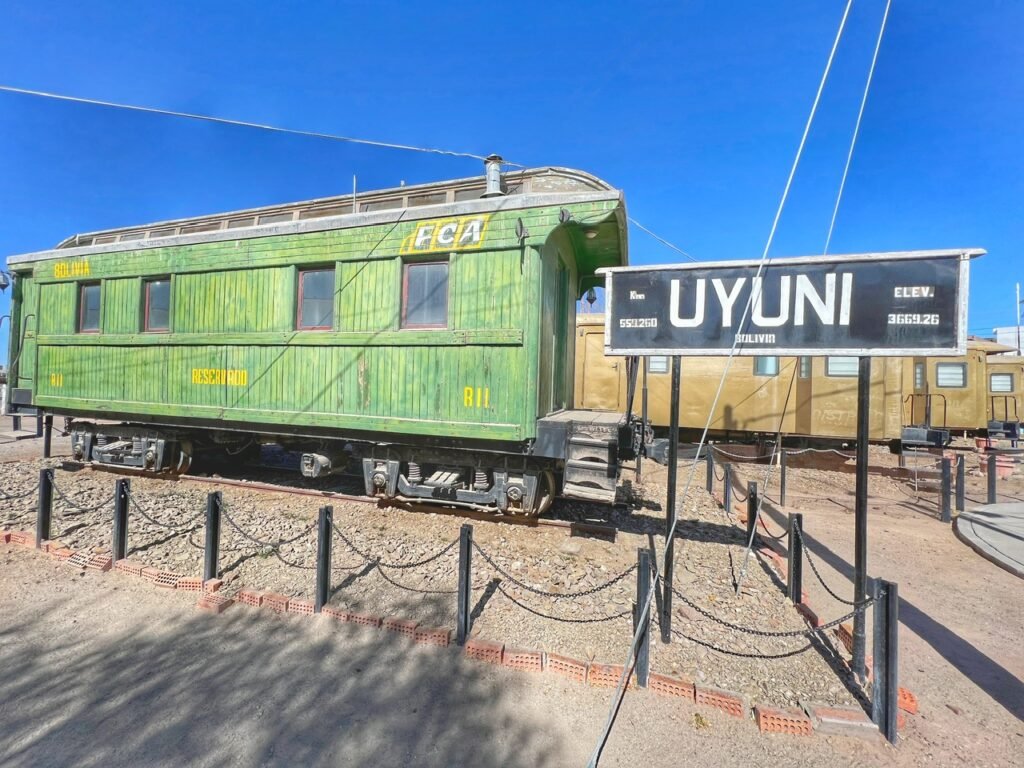
The historic railway played a essential role in its development.
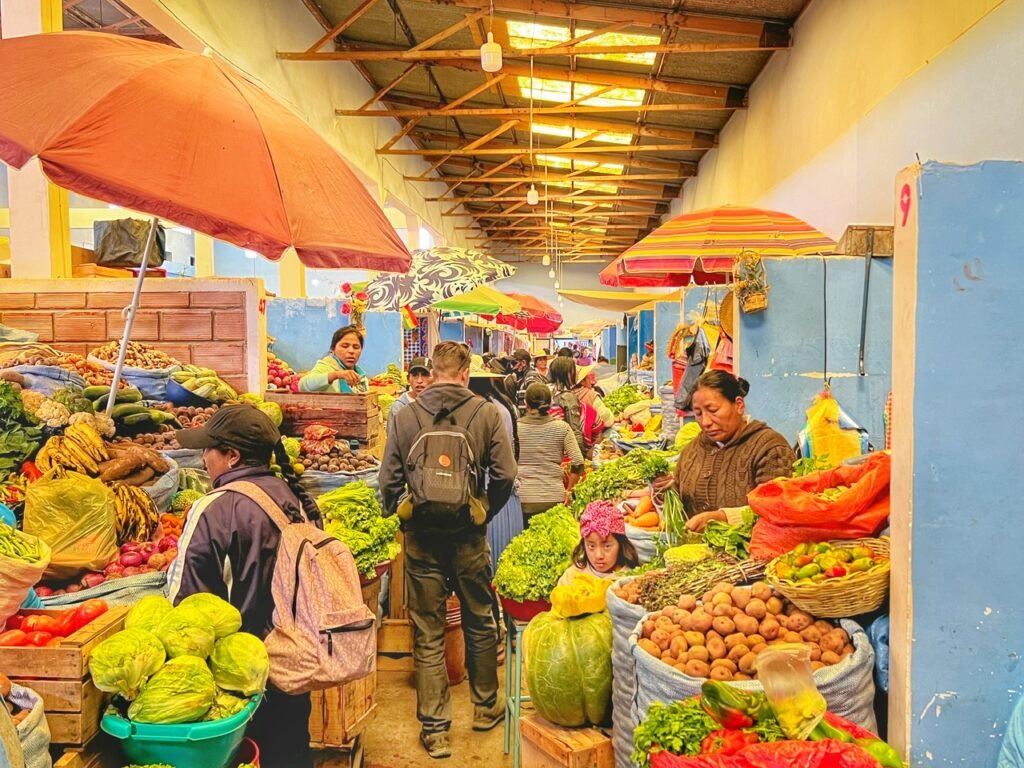

The indoor town market was undeniably less organized than others we’ve seen throughout the country. We also found it comical that they were always ready for rain….inside.
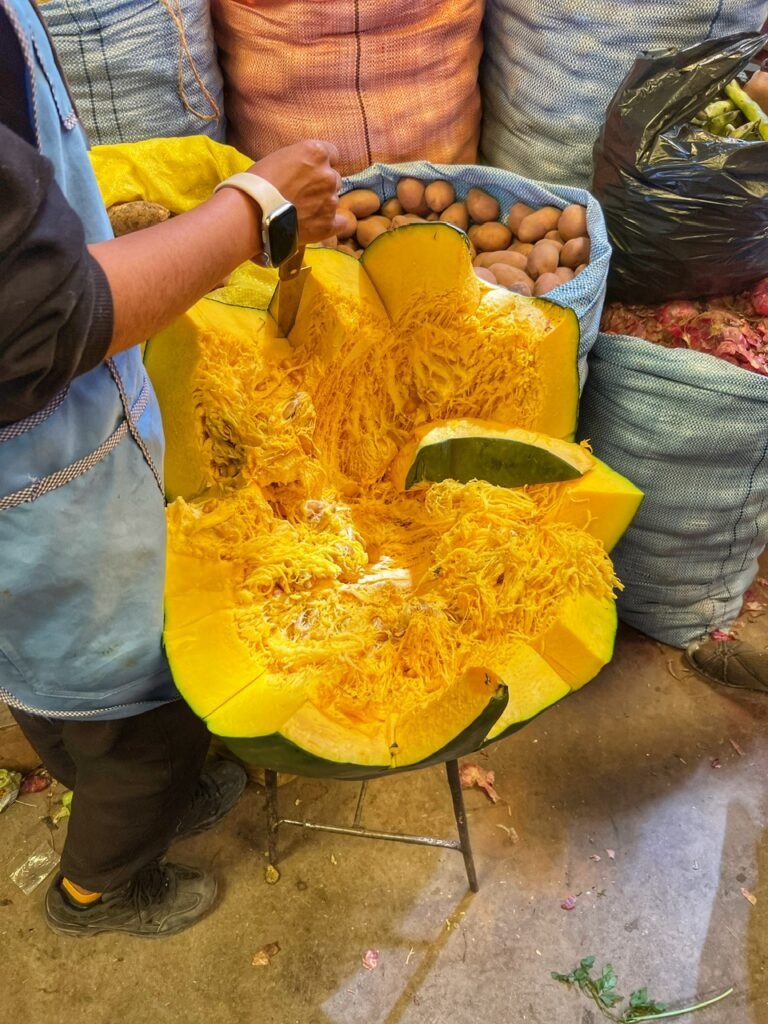

That squash will feed the Bolivian army! Wow!
Drinks line the shelves. Since our 3-day food poisoning (which we’re sure came from lettuce) we had been a little bit more choosy about what we consume.
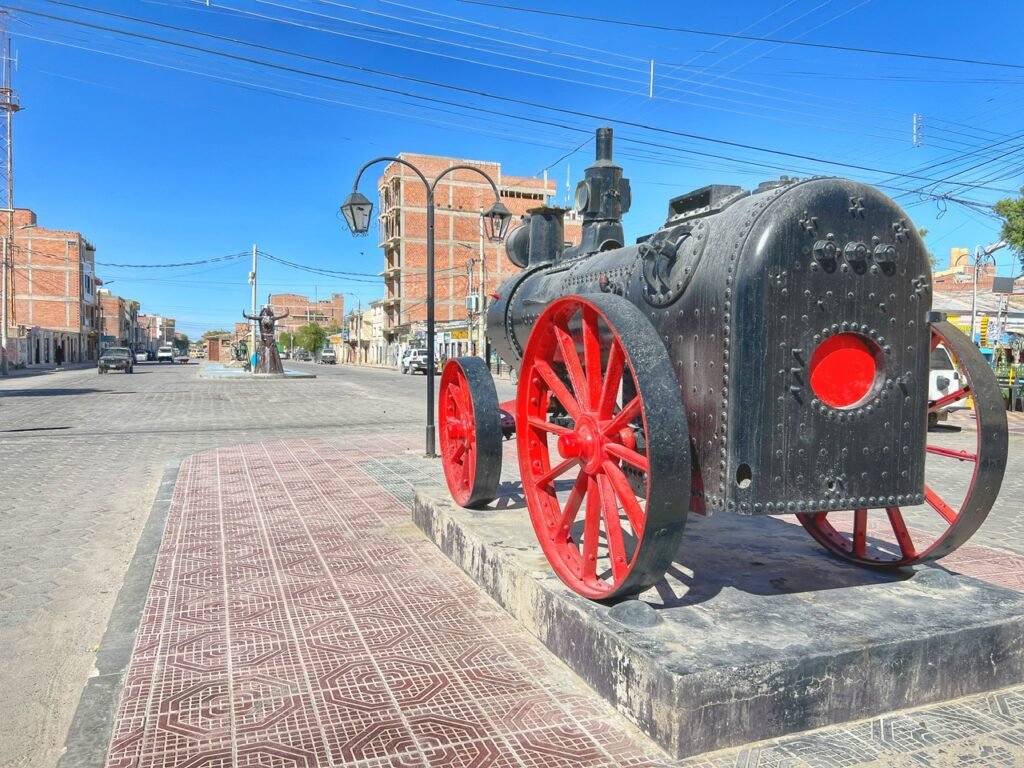
Antique rail equipment lines the Main Street of Uyuni.
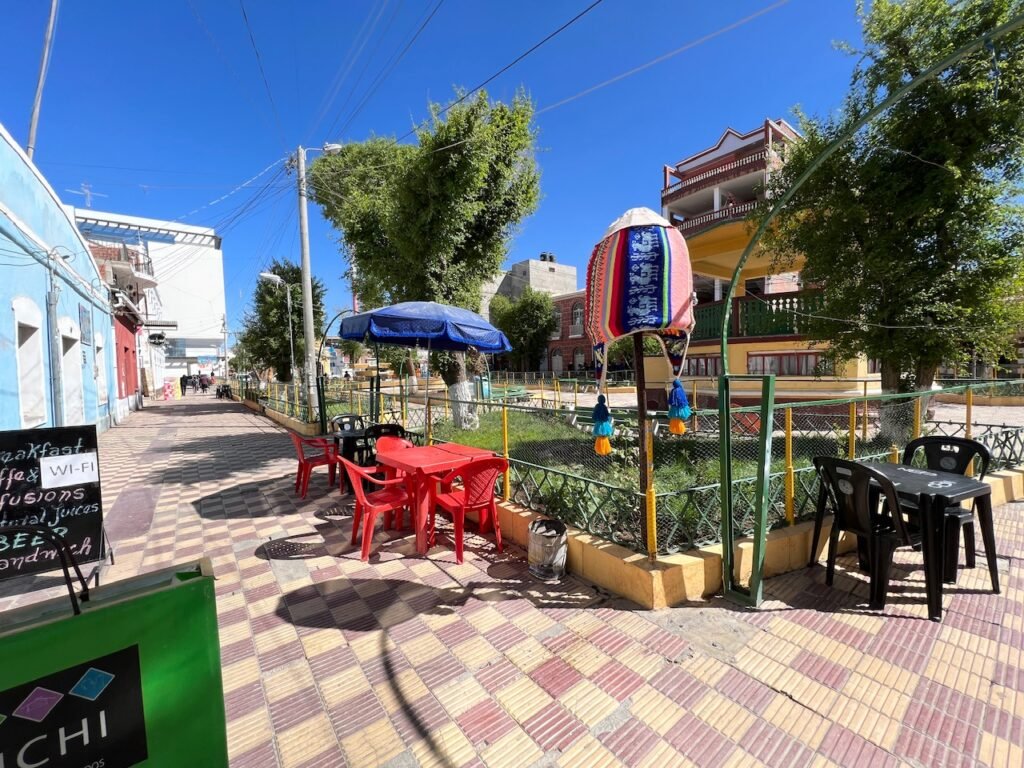

The main pedestrian street was lined with overpriced tourist meals and souvenir shops. Much of the merchandise we found in Bolivia was similar to Peru, although surprisingly more expensive. For example, Greg was considering buying an alpaca sweater here because he regretted not getting one in Peru, but they were nearly $75. ($40 there.)

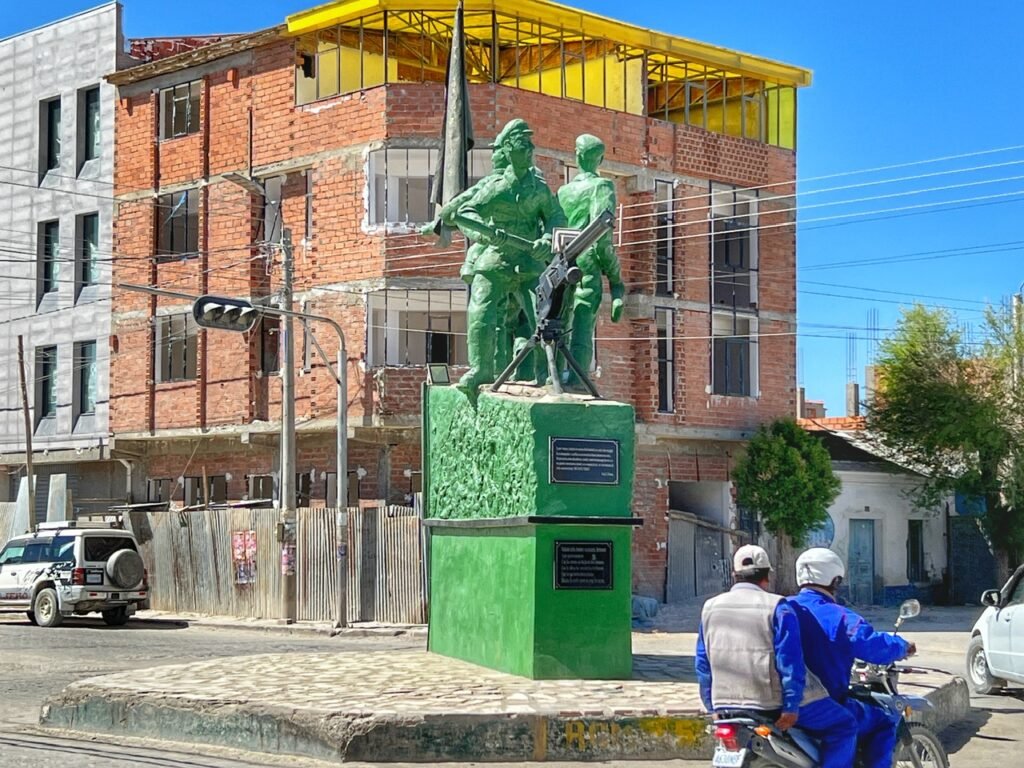
A monument to Dakar, and another jolly statue.
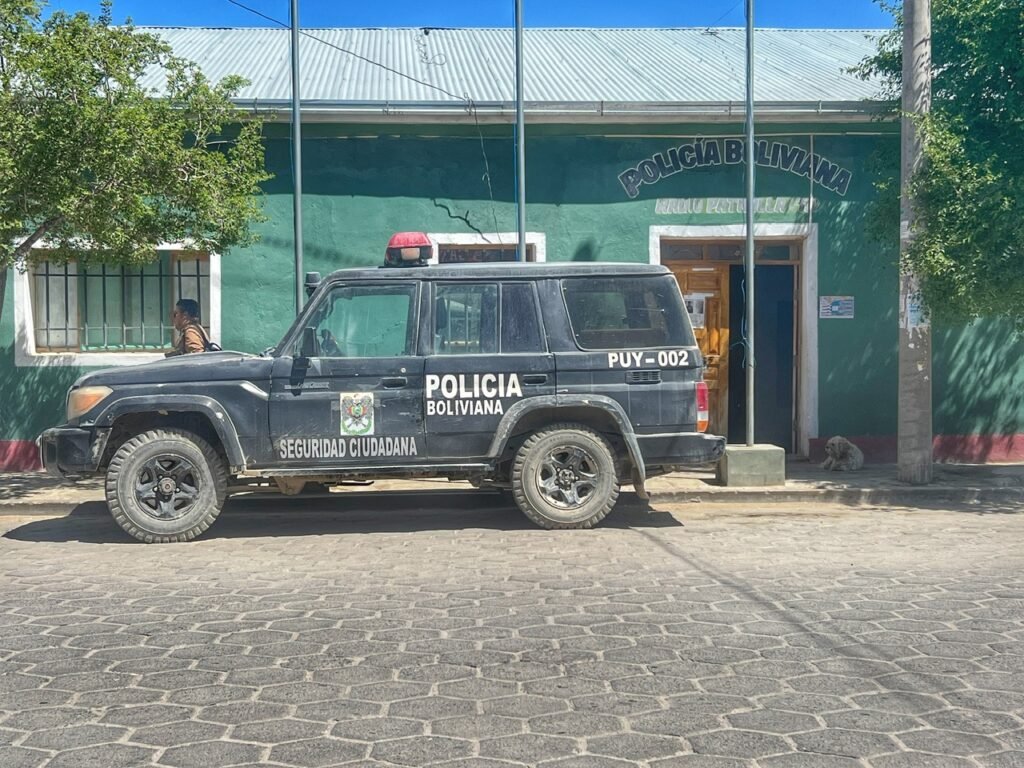
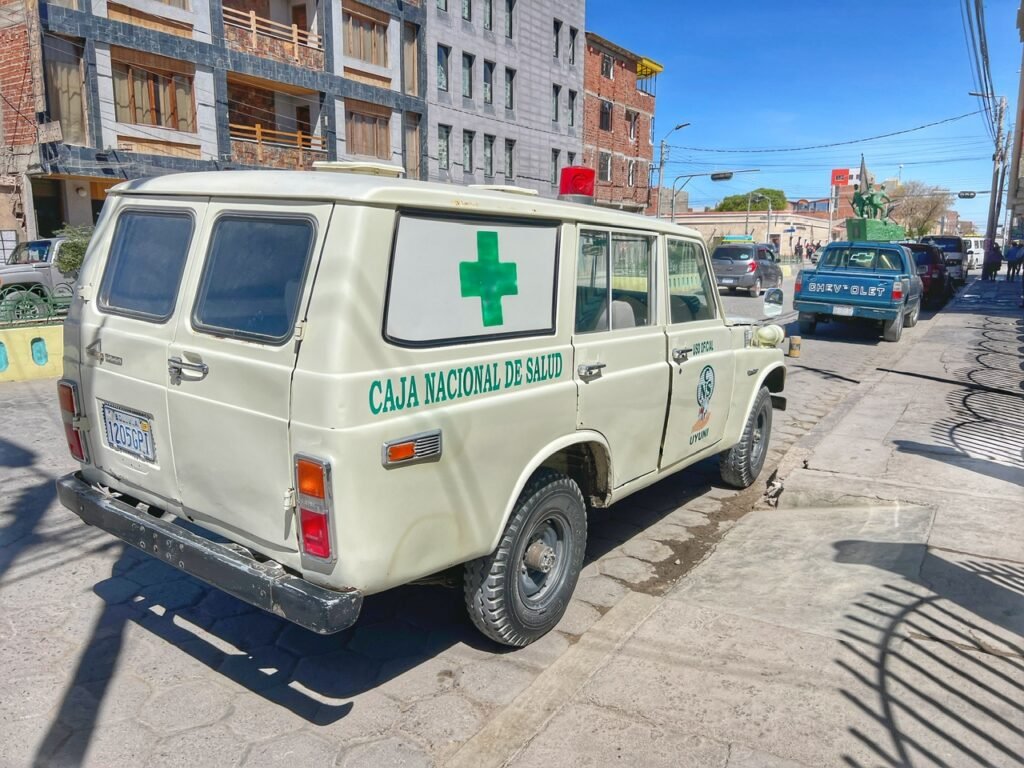
Uyani police vehicle and an ambulance that looks like it crawled out M*A*S*H. Uh…remind us not to need one of those in Uyuni. Or, Bolivia in fact!

We saw just as many traditionally dressed ladies in Bolivia as in Peru. Their clothes, especially the leg warmers, were so cute.
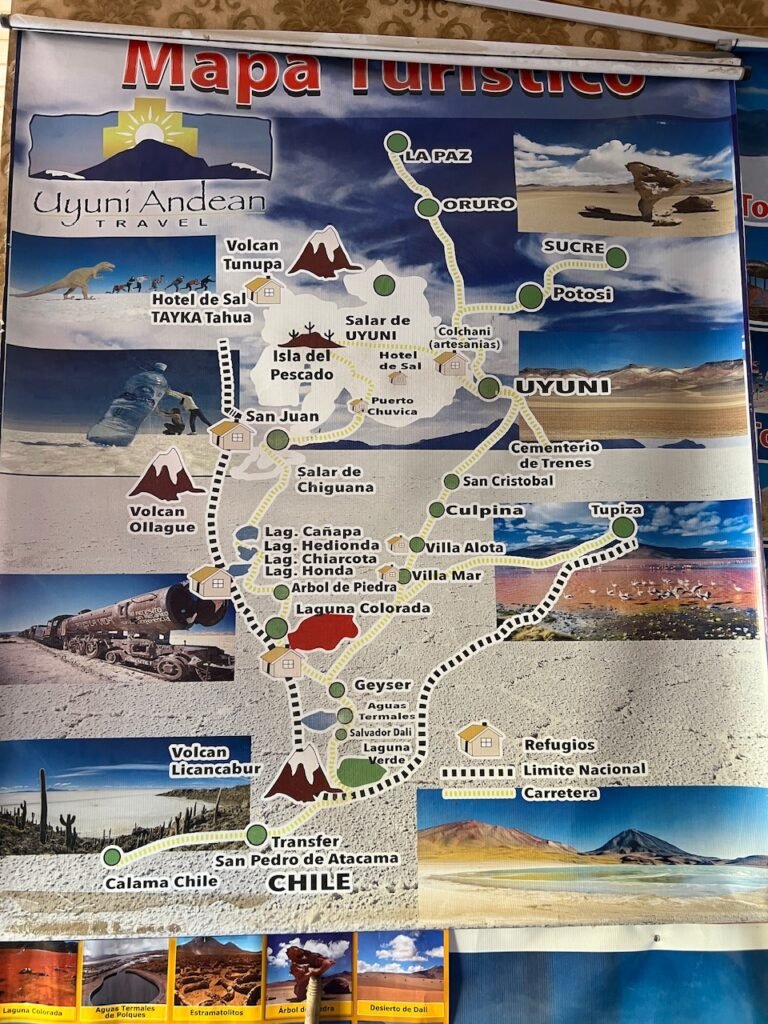
One of the most important tasks in Uyuni, however, was of course booking our salt flat tour. There are ample agencies with ample options ranging from one to three days. It’s definitely not necessary to book in advance. Because we’d already blown way too much on our visa, we chose the one day option knowing we can always return if we really want to.
Train Cemetery

If you’ve been following us awhile, you probably know that we’re always up for peek inside an interesting cemetery. But this one may be the most interesting of them all because the more than 100 skeletons are above ground, you can climb all over the bodies, and even inside the carcasses.
Yes, of course we’re talking about completely abandoned Train Cemetery, three walkable kilometers from Uyuni, where in November 1890 a train paused for this first time in this place. In the train was the Bolivian President, Aniceto Arce, prepared to celebrate the creation of his country’s first railroad to transport minerals.
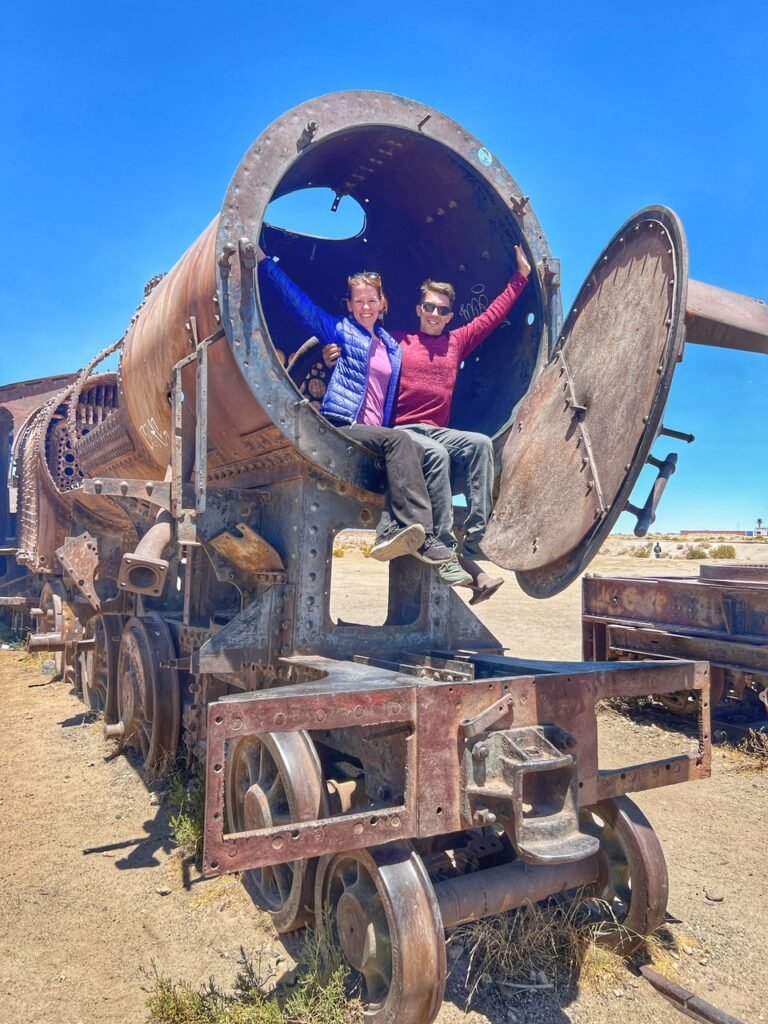
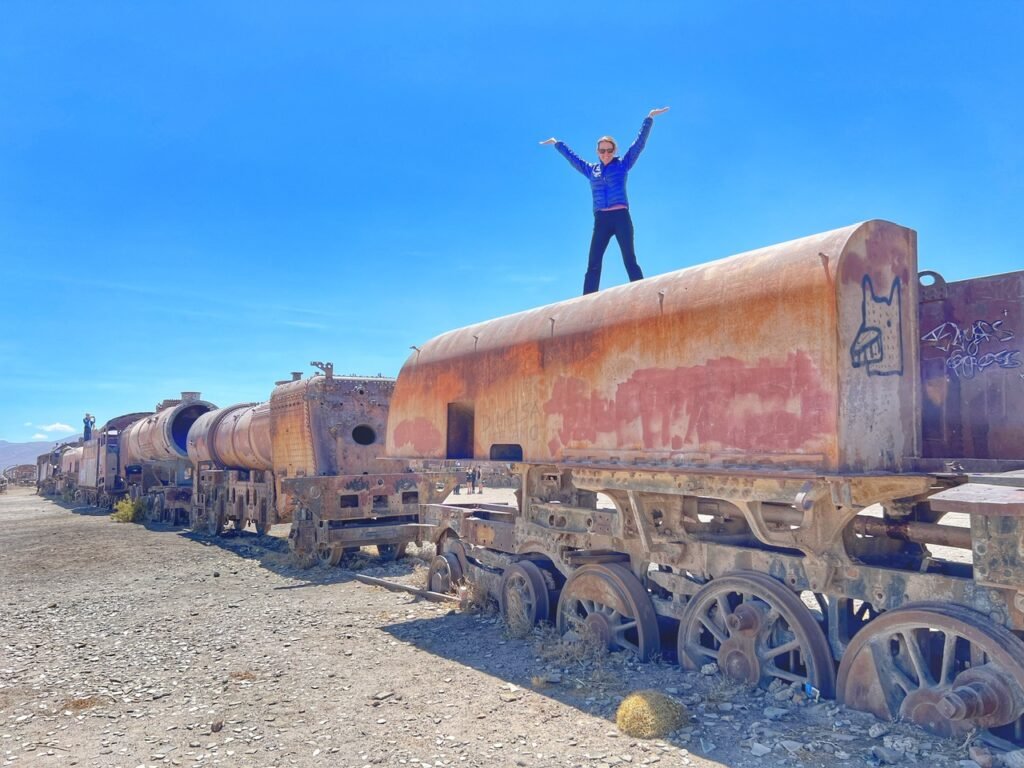
Of course one of the benefits(?) of Bolivia is that there are very few safety regulations so you’re welcome to climb aboard, trying to remember if you’ve had a recent tetanus shot. In reality, there is very little humidity in the air which means also very little rust. However, the salty winds have had their share in corroded the trains to their demise. And once you get past the shock of being allowed to do it, there was nothing stopping us from living our “India” fantasy of walking on top of a train. A dead one, but still. 🤣
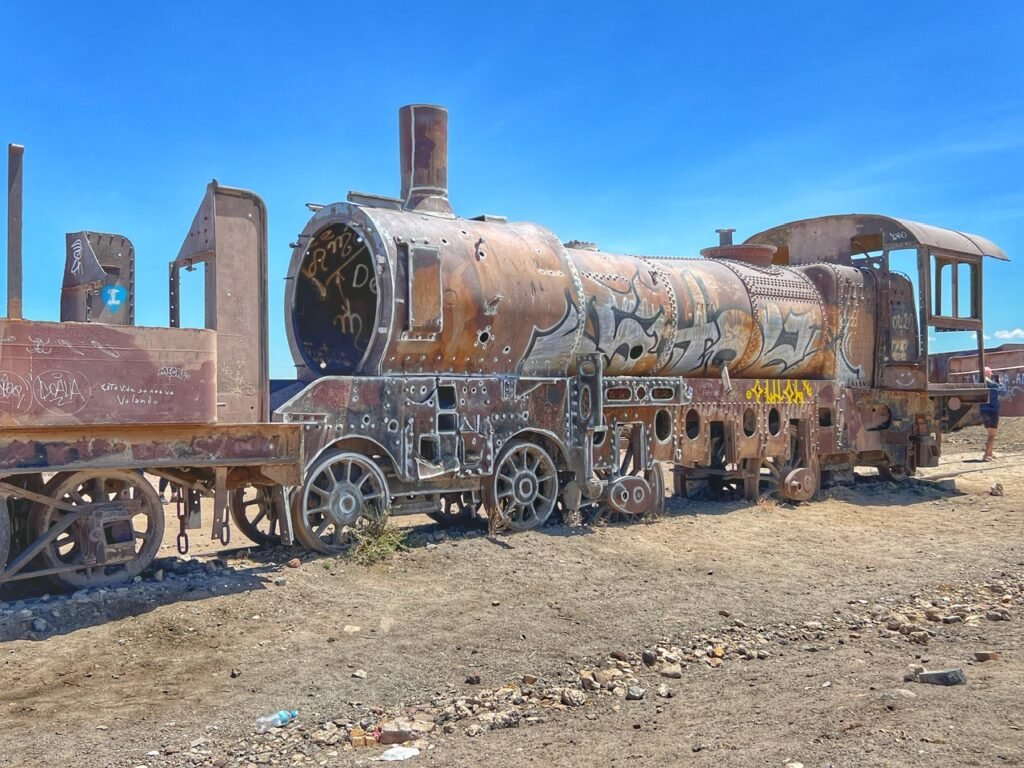
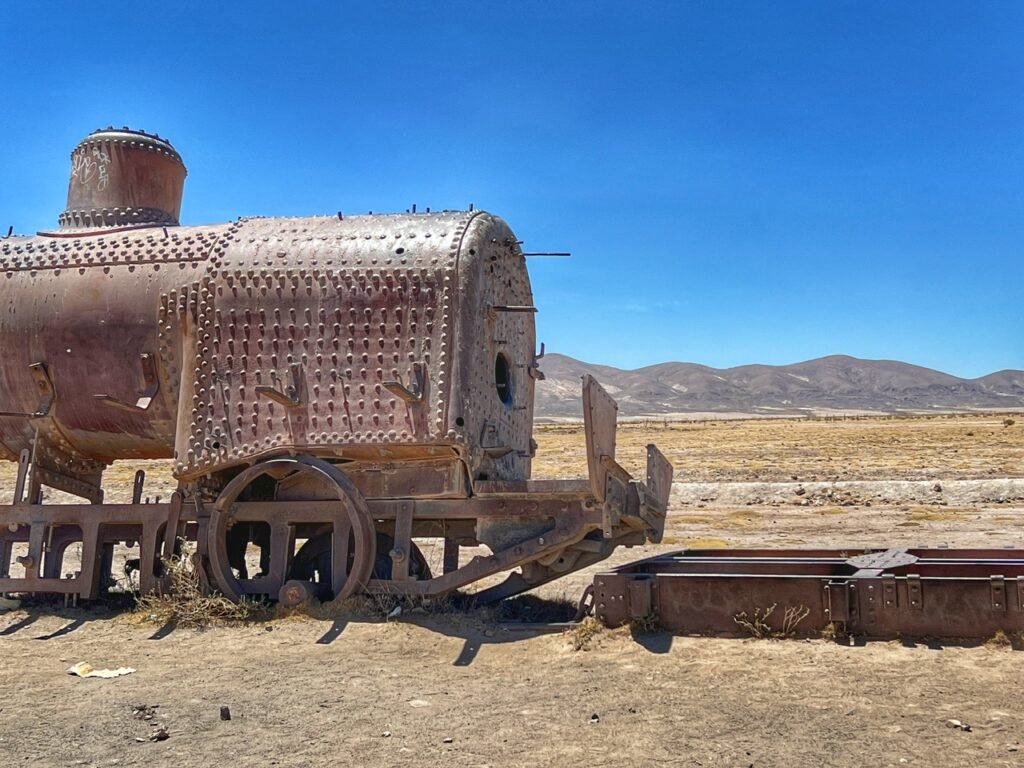
During the years following 1890, wagons loaded with minerals such as tin, silver and even gold would pass through this area connecting the Pulacayo silver mines with Antofagasta, on the Pacific coast. Following the War of the Pacific, sadly Bolivia lost its access to the sea and therefore had nowhere to continue exporting its mining. Poco a poco, the trains that were being sent to the Uyuni station to be repaired, would no longer come back into operation. This was how the history of the Uyuni train cemetery began.

Seeing the train skeletons from the inside out was pretty incredible.


Do you think it knew the day it was chugging its last chug? The little Mandy that could!
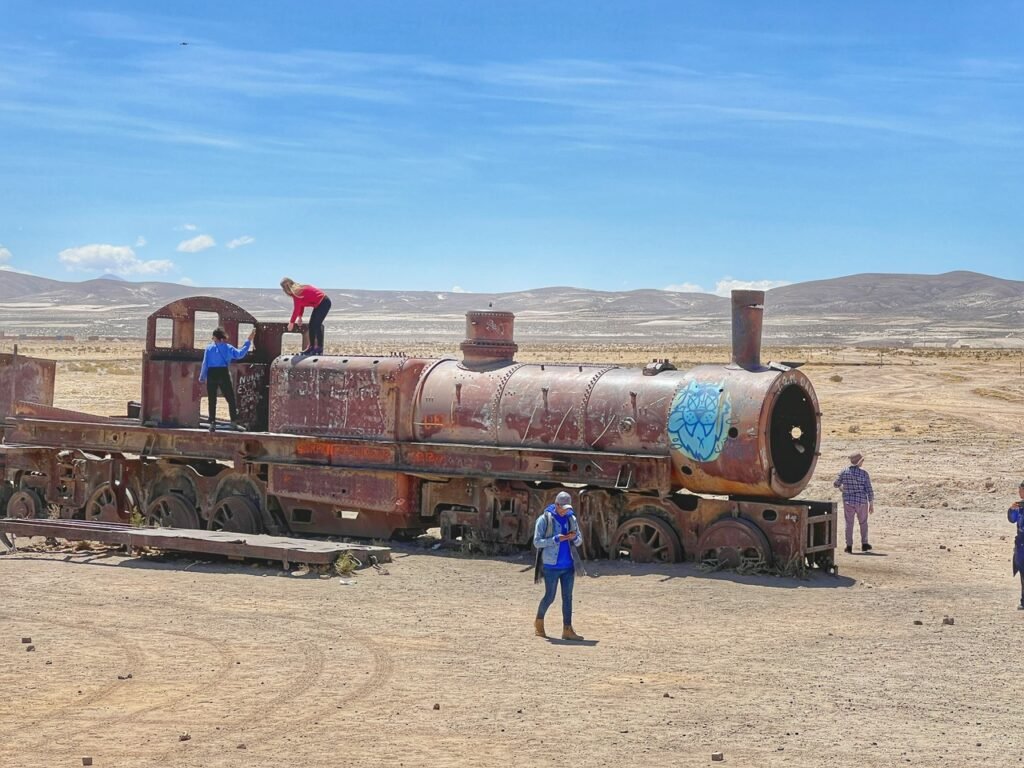
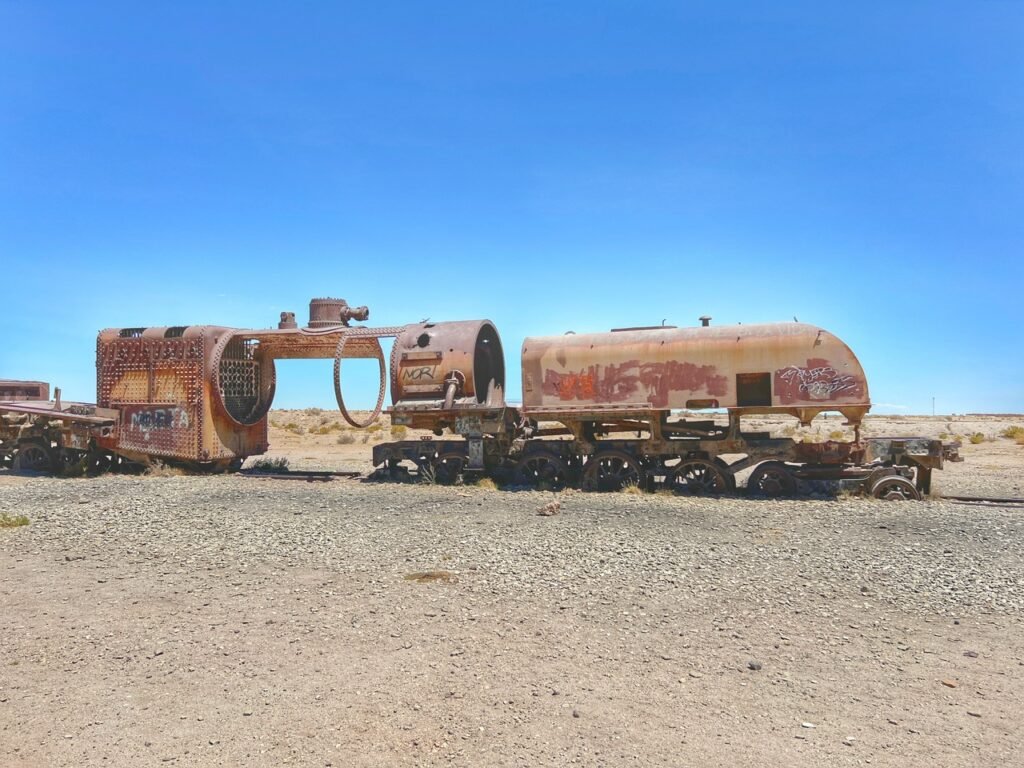
Most of the trains here are from the early 20th Century and imported from the UK. Every train enthusiast truly must visit this place in his/her lifetime.
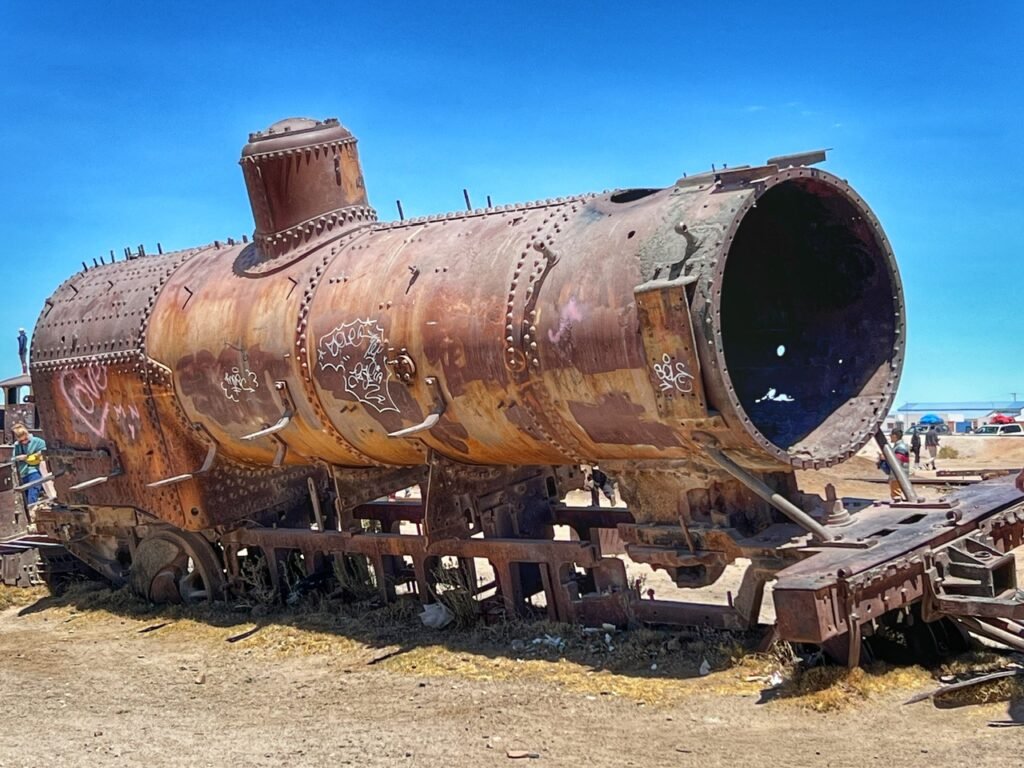
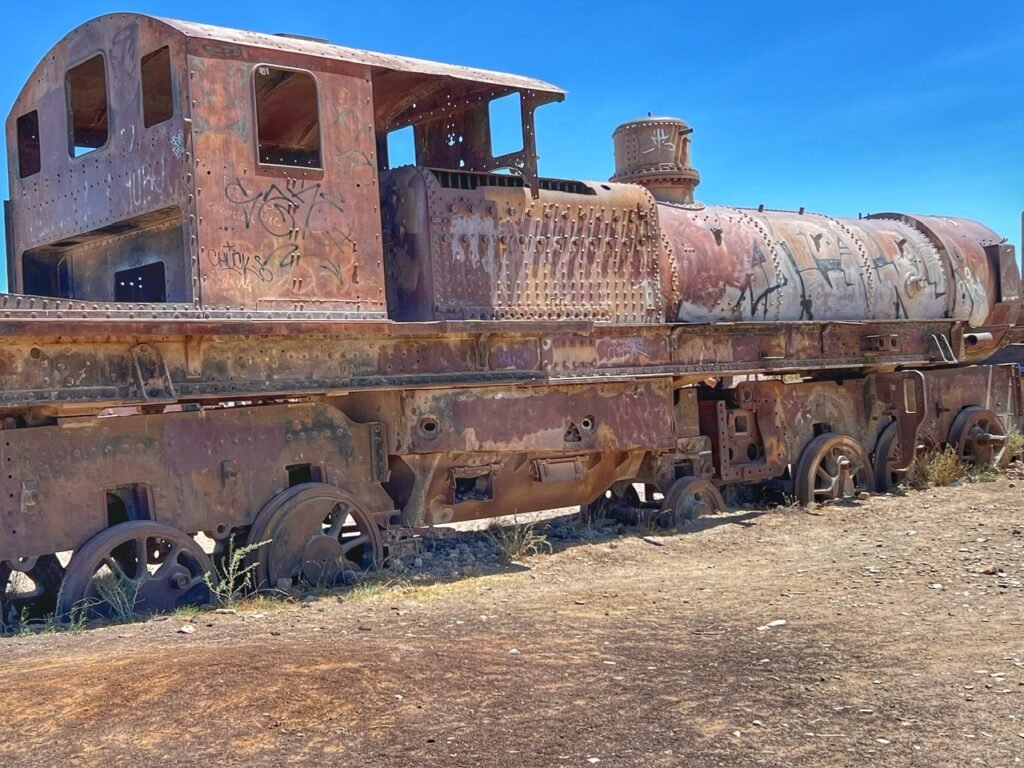

As most people, we visited to cemetery as part of our tour in the late morning. We wanted to return when the crowds were less (after 5 pm or before 8 am) but never made it back.
This place is truly a fine example of nature taking back its property from man. Look at the wheels getting eaten alive by the earth! Can only imagine what will remain in another hundred years…Unfortunately because there’s no security at the site, many trains are also covered in pointless graffiti.
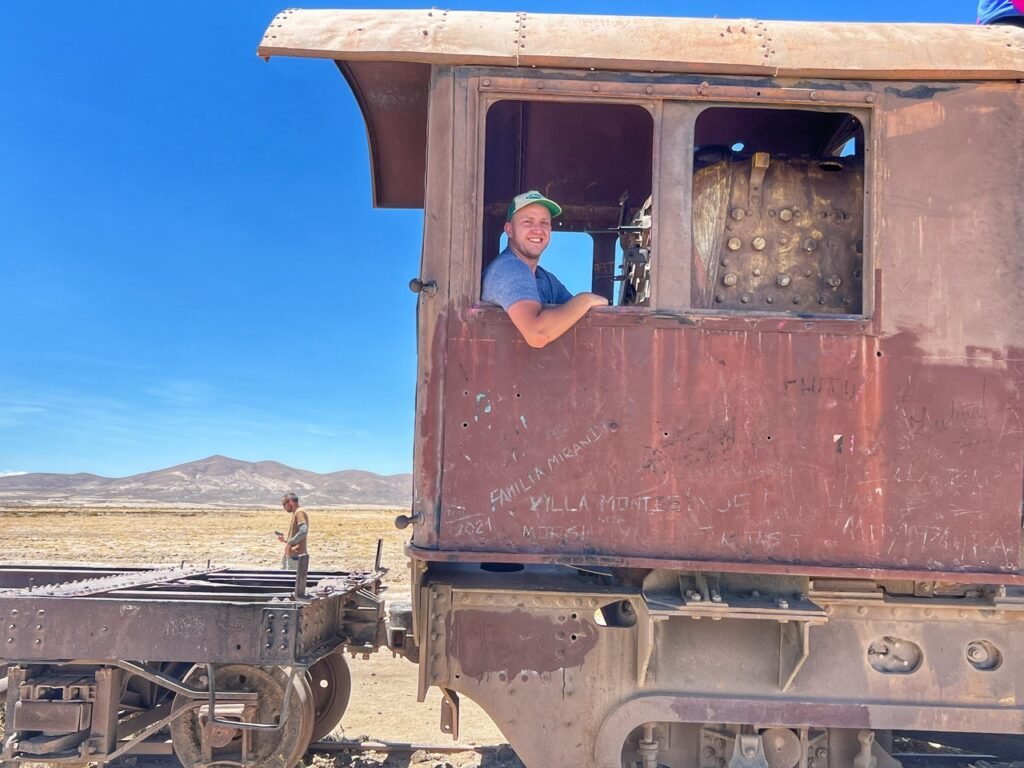
While there, we bumped into our Dutch friends Roos and Bob, who were just beginning their three day tour of the area. We do wish we could have joined them!!
Getting There & Where We Stayed

From the old bus station in Potosi, it was time to head for the top reason that many travelers come to Bolivia…the great salt flats of Uyuni. Bus travel in Bolivia is usually different depending on where you are. In this case, we found the lady with the clipboard hollering “Uyuni” in a baritone voice and paid her the money direct. She then directed us to the right bus, which we probably wouldn’t have found otherwise because it’s not always labeled.
This time we took a fun-sized (not full-sized) bus from the OLD bus station which endured four hours and cost $4.50 each. Along the way, we begin to feel like we were truly in Bolivia as we met rolling snow-capped Andes, massive herds of llama and vicuñas, and much more parched and dusty terrain.

This entire plain was blanketed with llamas and vicuñas.
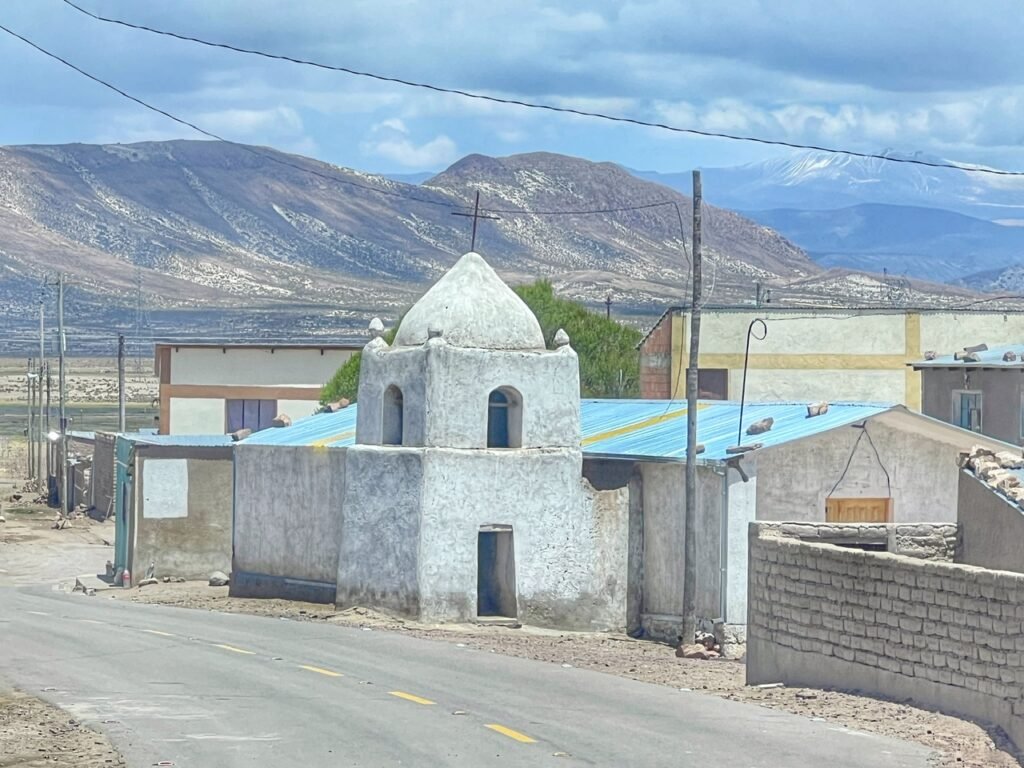
A tiny village and a tiny church, which looks like it’s made of salt.

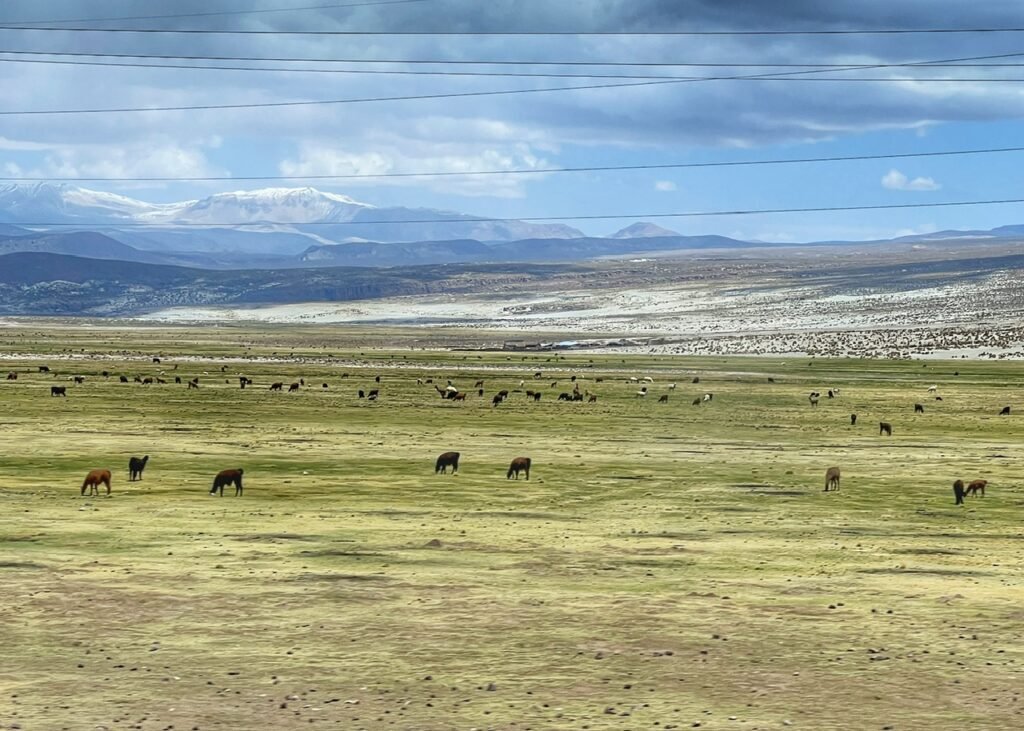
Yesteryear homes mingled with new homes on fields that appeared to be a pretty happy life for the animals at least.

A seemingly very old woman flags our bus for a ride.
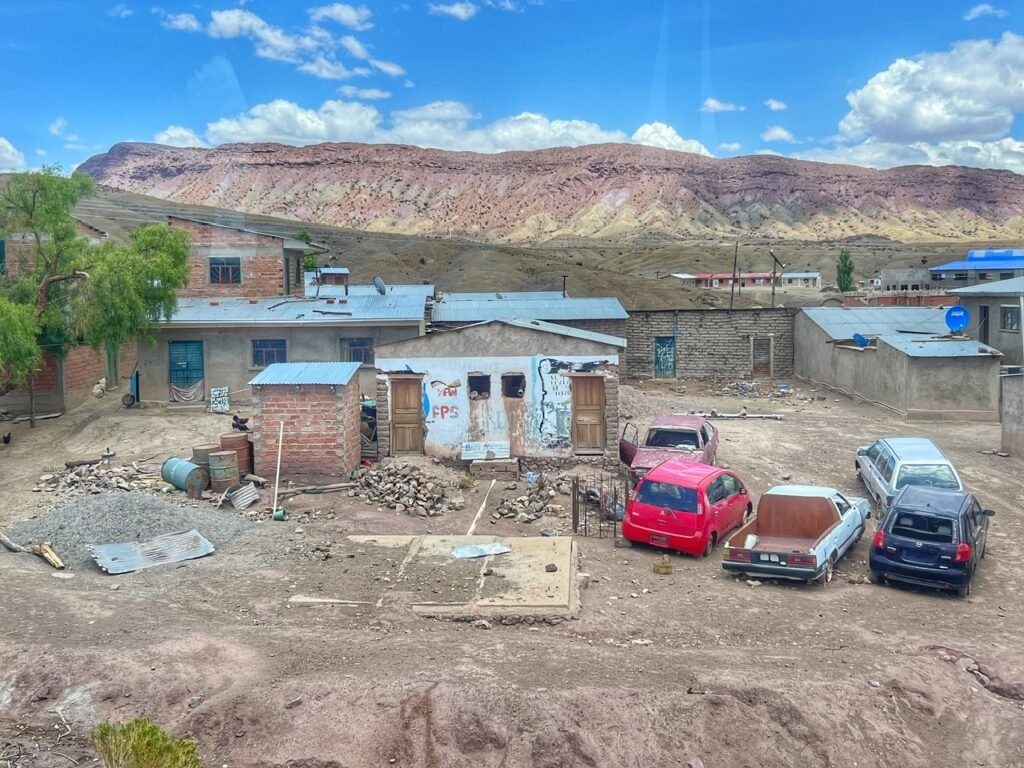

The dryness prevails in a land where the total national poverty rate is 39% and the campo is typically where you see the most dire situations. Although Bolivia is rich in natural resources, economic development is limited by high production costs, poor transportation infrastructure, inequality and the country’s landlocked status.
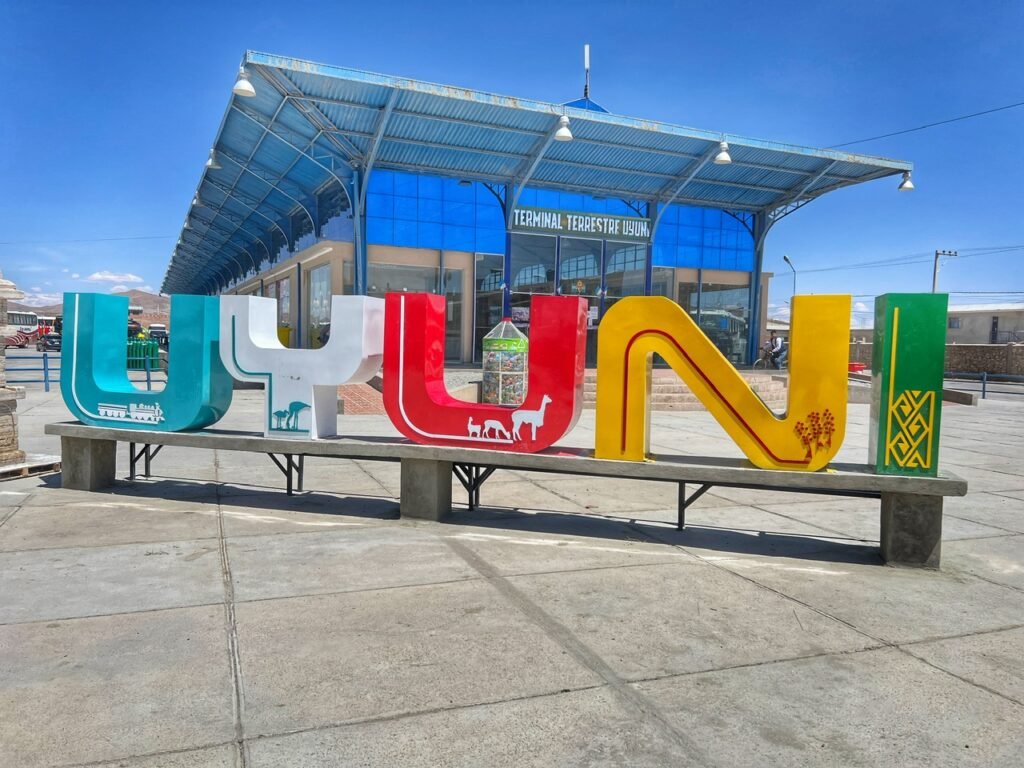
And we made it! To the sparkling new bus station at least.

From there we had about a 30 minute walk to our hotel, which included traversing over the railroad tracks and into the vast and dusty expanse that is this necessary tourist mecca.

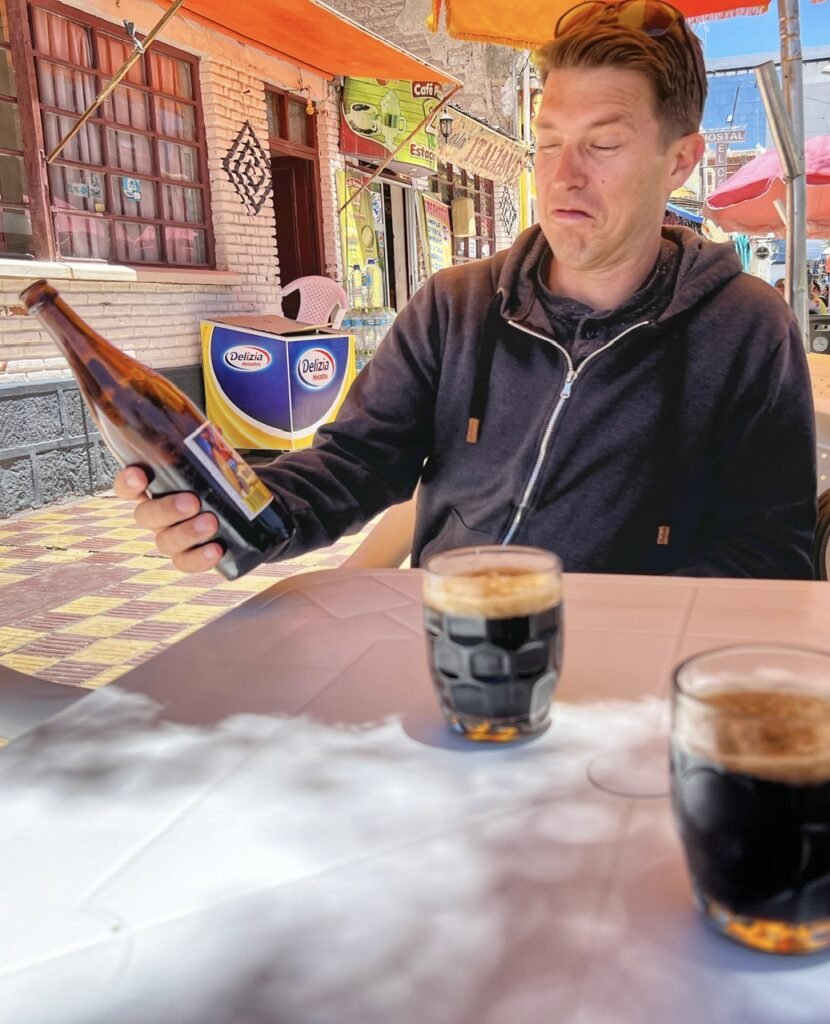
We broke up the walk by stopping for by lunch and our first beer…a cerveza negra…in weeks because we’ve both been on antibiotics. Of course, as many things in Bolivia, buyer beware. Greg took one swig and made this face, proclaiming it tasted more like…root beer…than real beer. And when we looked at the ingredients, sure enough, sugar was one of the ingredients along with two forms of dextrose. In beer. Well, if we had to chose a time not to drink, at least we haven’t been missing much. 🤣
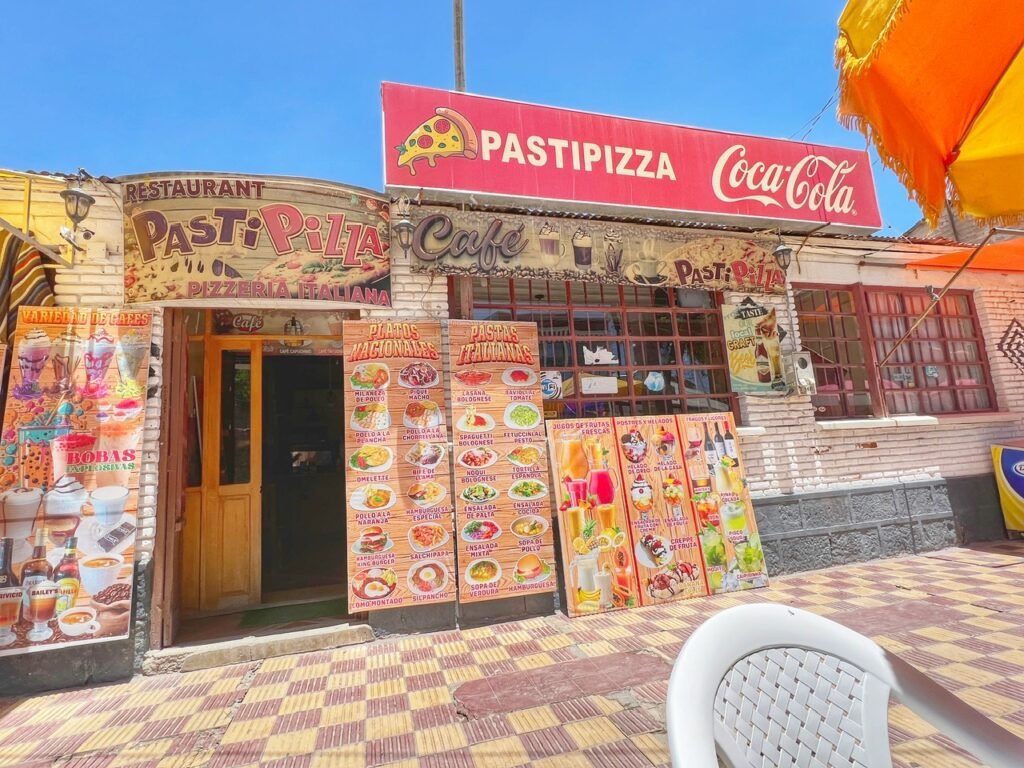

The place we decided on was one of only a handful of restaurants that had more than 4 stars on Google. The majority were appallingly low in the 1-3 star range. And the more disappointing, but expected, part? The prices were undoubtedly made for the tourist and the most expensive we’ve paid in Bolivia yet. (95 Bolivianos or $14 for two meals and the candy beer.) Fortunately, Mandy’s veggie personal pizza was actually decent, as was Greg’s milanesa.
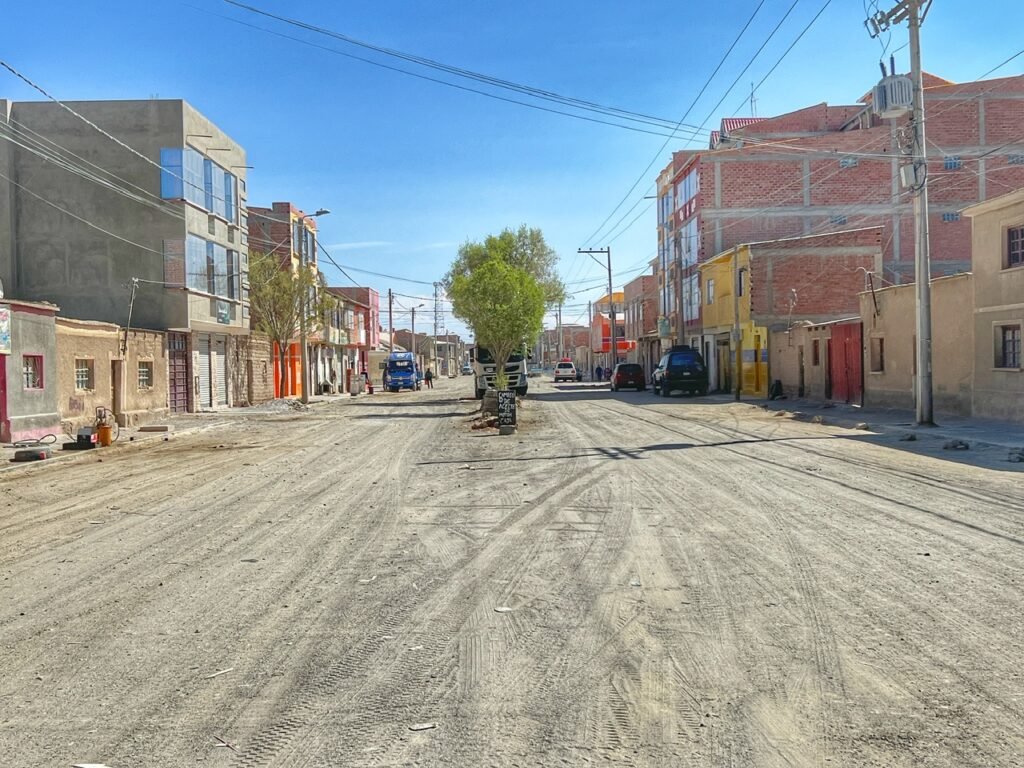
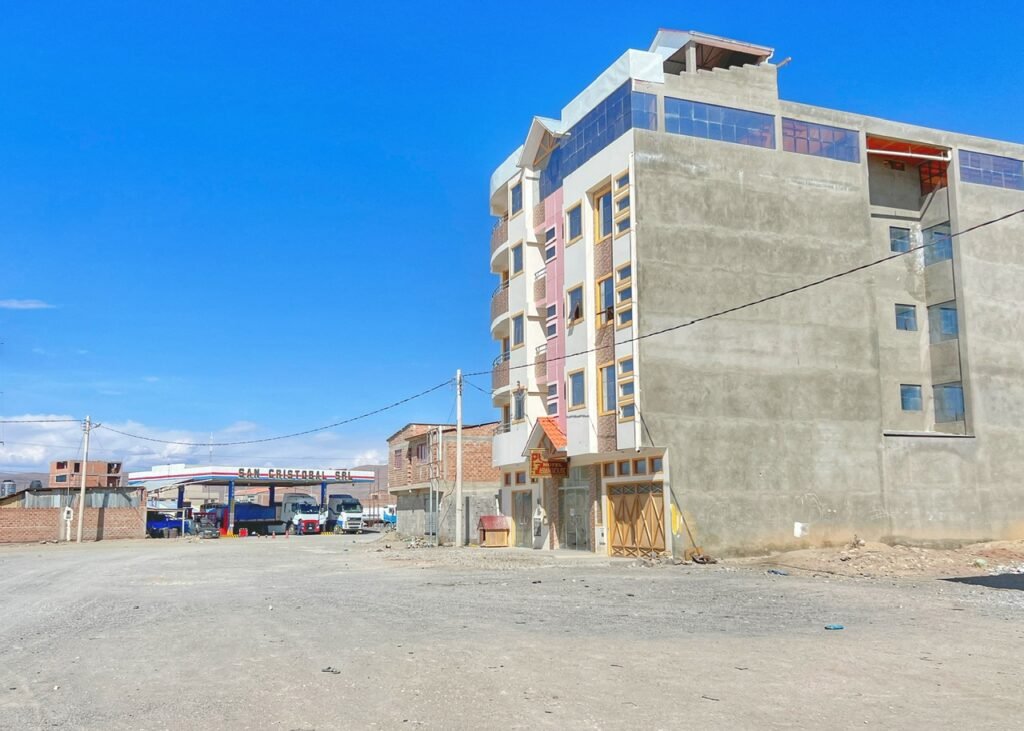
We chose a hotel about a 15-minute walk from the center to save a little cash and in hopes of a quieter experience. It wasn’t the best choice, to be honest. The walk there was incredibly lackluster. After wandering around with our bags for far too long, we finally found “Asian House” next to what looked like a southwest US trucker stop in the middle of a bleak parking lot, nowhere near the Google map pin. The door was locked when we arrived so after hitting the buzzer multiple times, we waited a good ten minutes until a bleary-eyed 8-year-old finally let us enter.
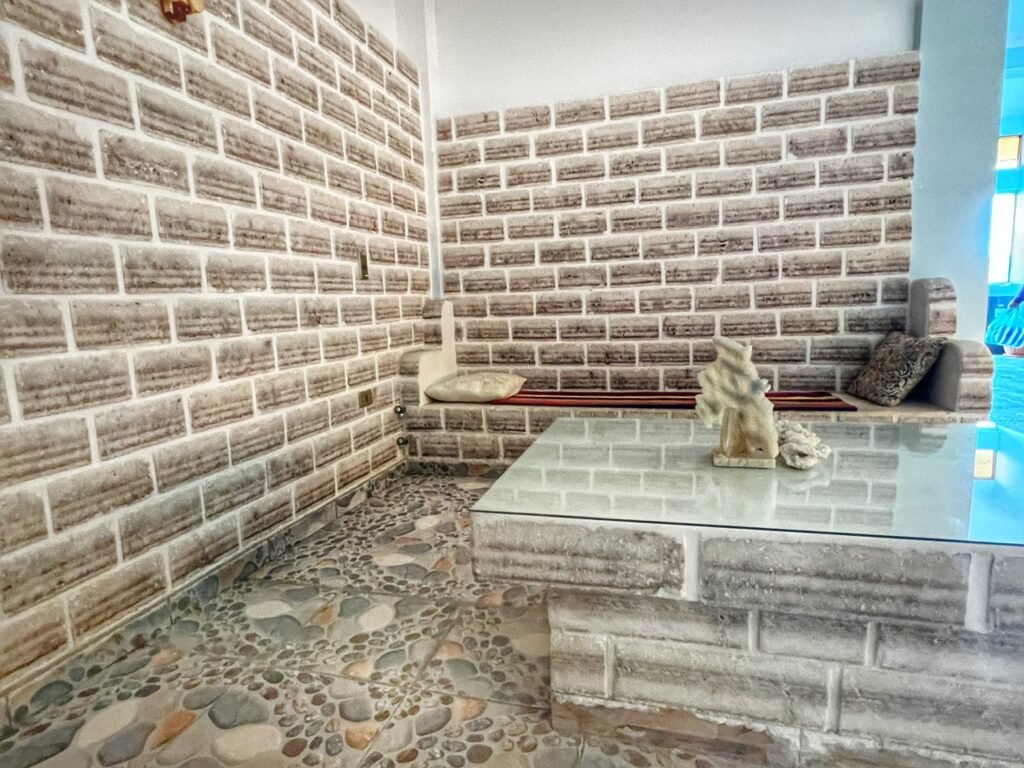
In the lobby we encountered our first introduction to construction materials made of salt blocks. Some hotels are made entirely of salt in Uyuni but ours cost $22, not $400, so we’d only get a few slabs.


The view from the balcony. Lovely. At least it was a great sunset! The next morning we arose for our complimentary breakfast which included this tablespoon of sugar yogurt and six banana slices (yes we counted), some bread, an egg and coffee. An adequate breakfast for the price but certainly nothing to write home about! 🤣

